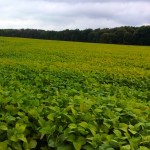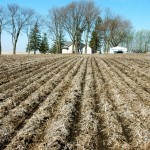
A new look at 30-inch rows for soybeans
If you think the case is closed on 30-inch rows, get ready to think again

Eight tips for growing flax
Agronomy researcher Chris Holzapfel shares what he’s learned about growing flax
Read more

Rye takes an innovation jump
Hybrid varieties and new specialty markets are breathing new life into what had become the poor cousin of the Prairie cereal family
Read more

Blending scores big with cover crops — and diversity
More growers are exploring more blends with specific goals in sight
Read more

Double-cropping on a comeback
Today, the double-crop odds are even more in the growers’ favour, thanks in part to short-season varieties bred for Western Canada
Read more

Where do you cut when you have to cut costs?
As crop prices drop, growers have a new focus on cost containment. Weed control is always a big bill, so it’s only natural this gets a hard look — but taking the wrong steps could cost you money
Read more

We need to get our herbicide resistance response right
Dealing with what's become a global problem could end up being one of Canada's key competitive advantages as a grain-exporting nation
Read more

Unique farmer-driven funding model achieving the ‘im-pulse-able’
The Prairie pulse sector has developed from a few hundred acres to a few million
Read more

The right corn hybrid for your soil?
Pat Lynch says there are other ways to maximize production — and they’re more realistic
Read more

Corn isn’t just about crop heat units
New shorter-season hybrids are just part of the Prairie corn picture. Just as important will be the local research to fine-tune how they’ll fit into the production system
Read more


